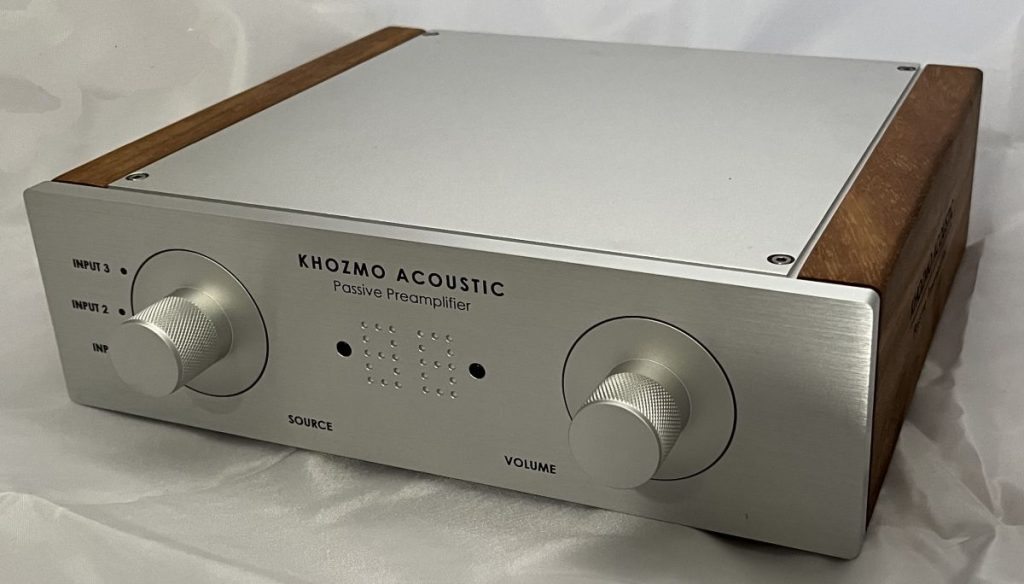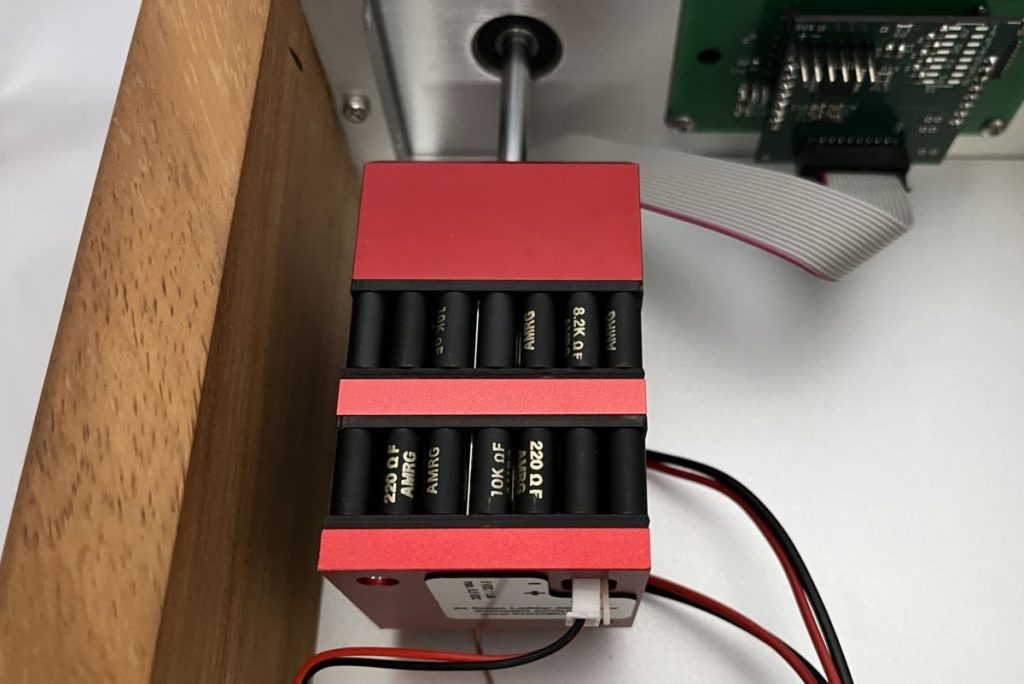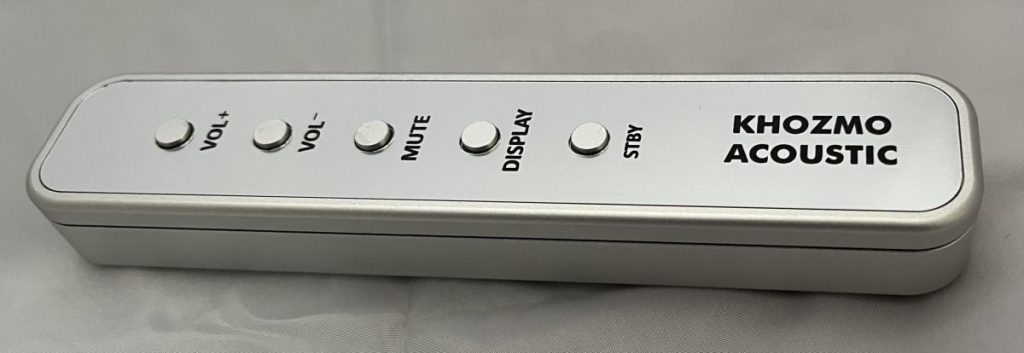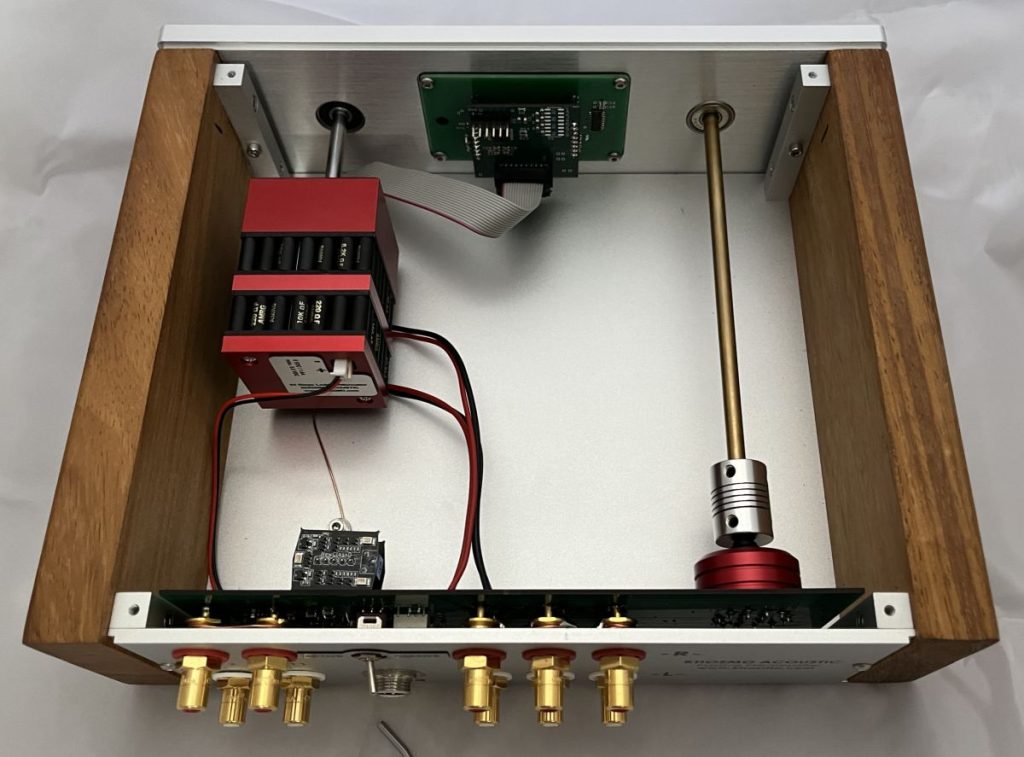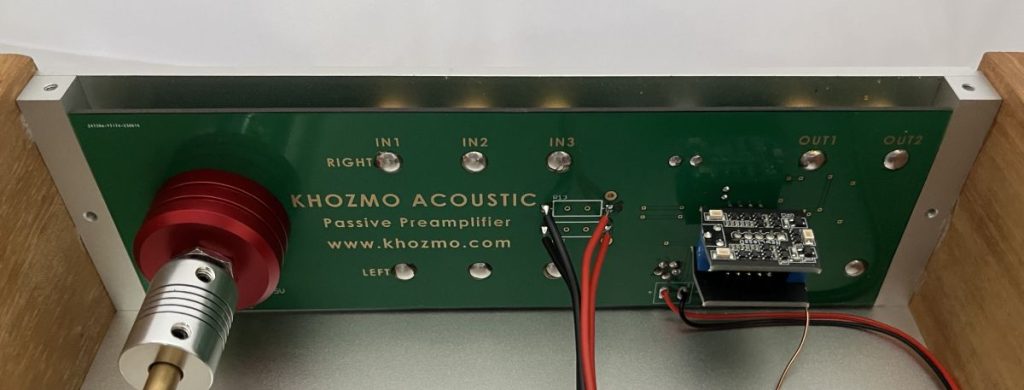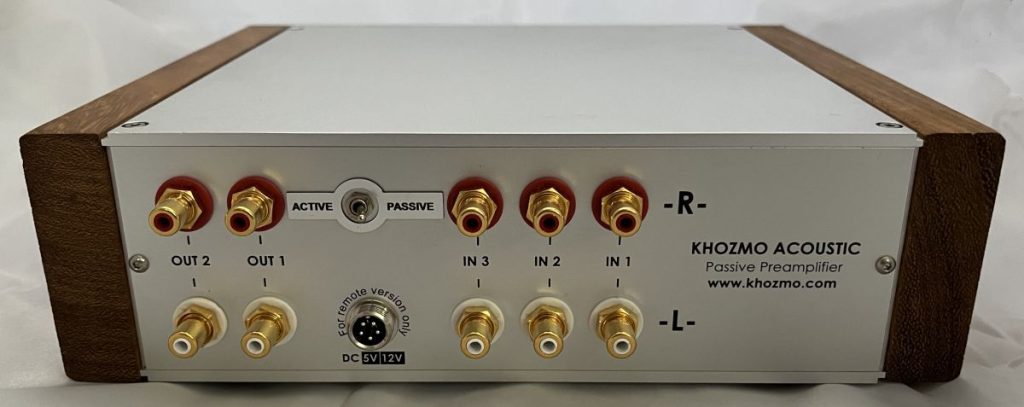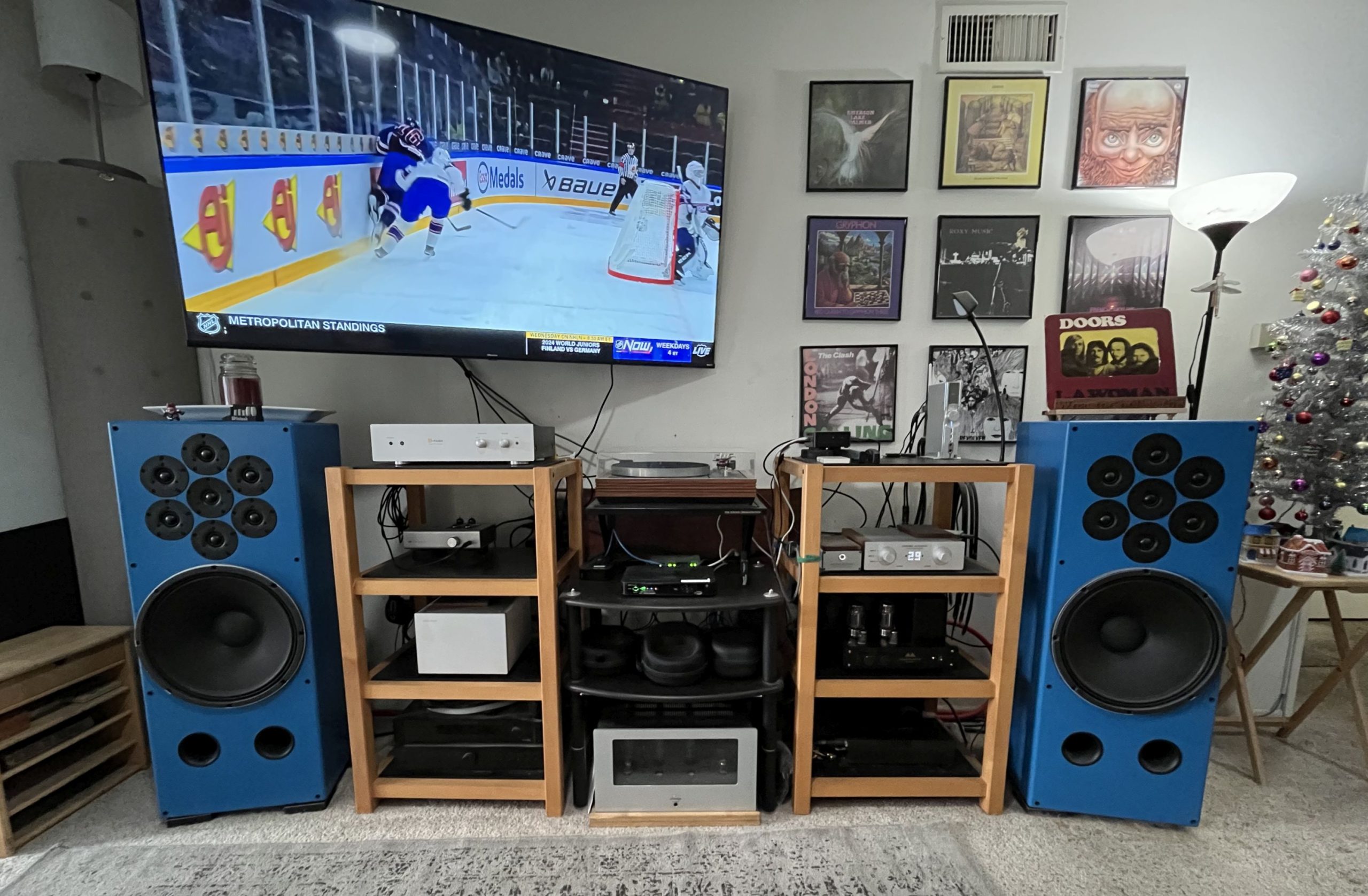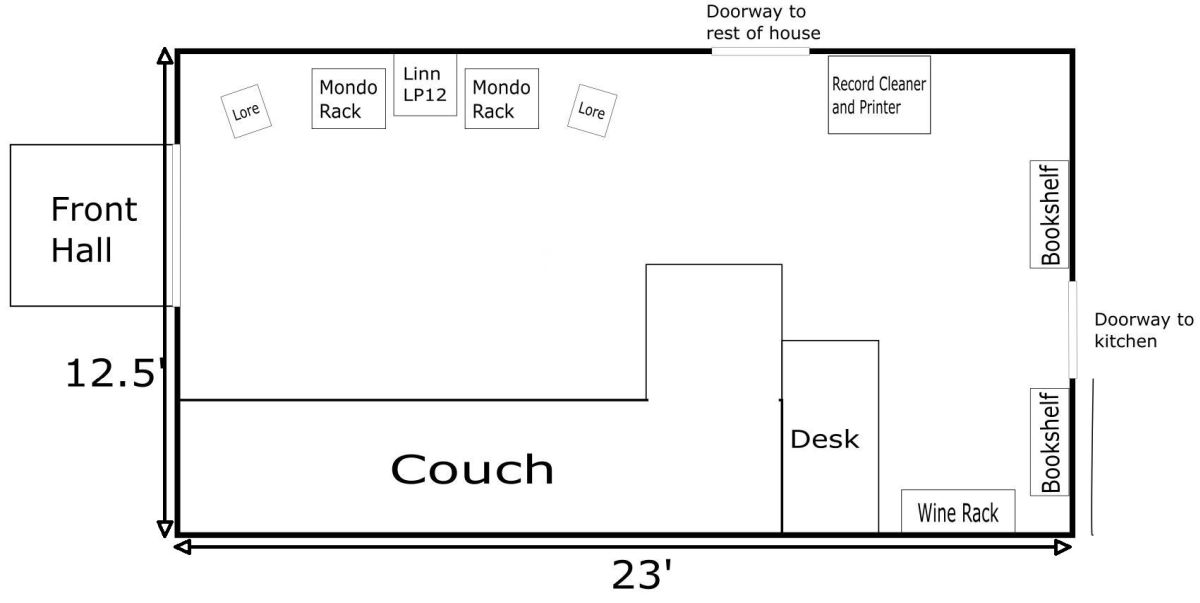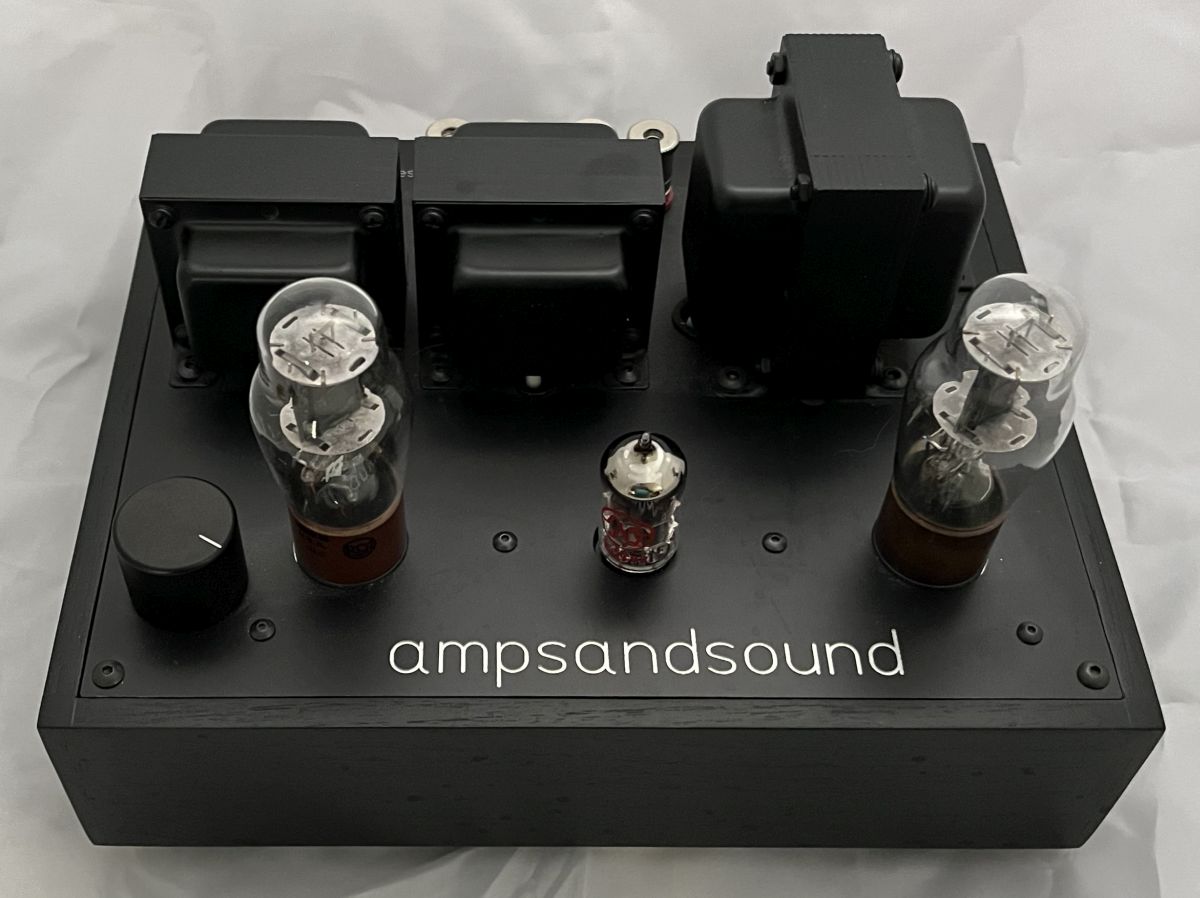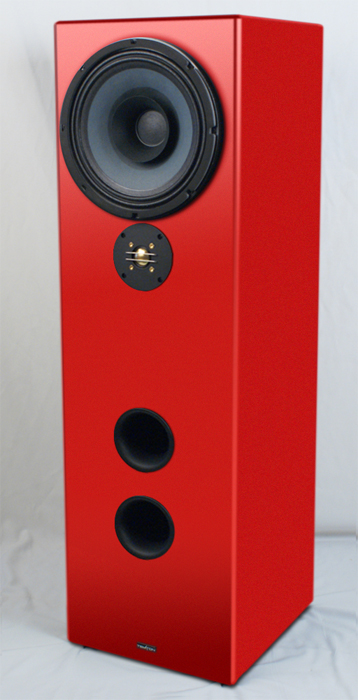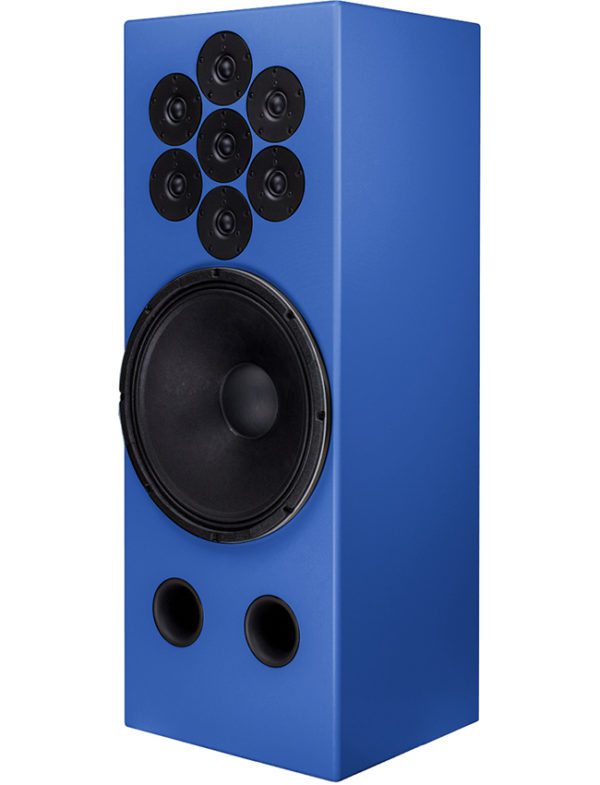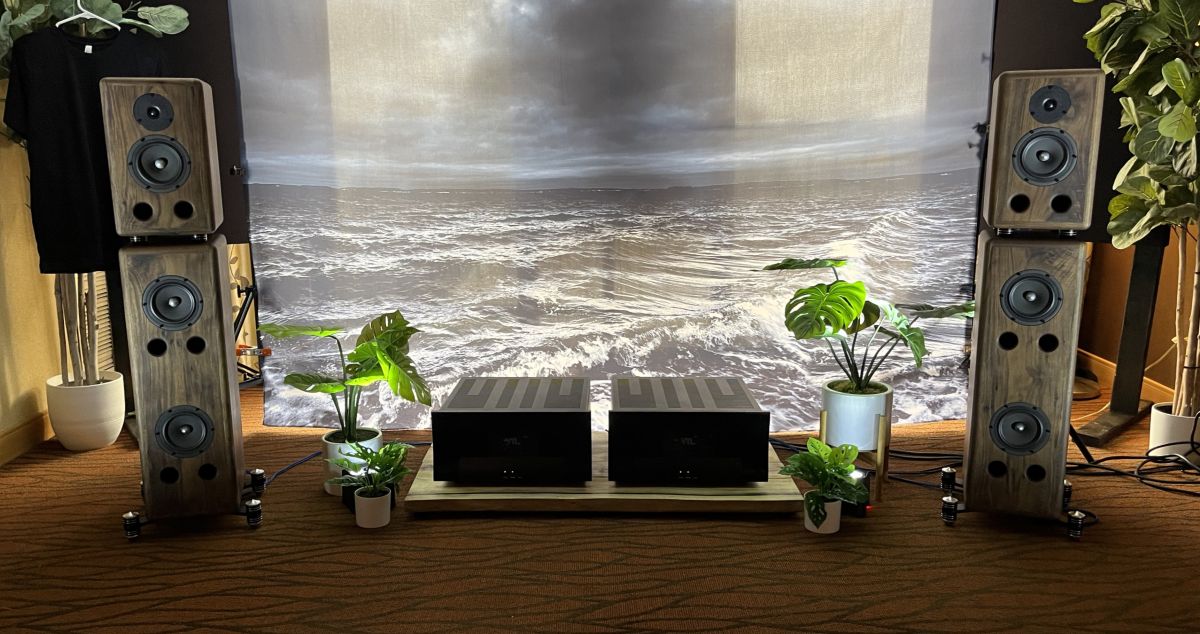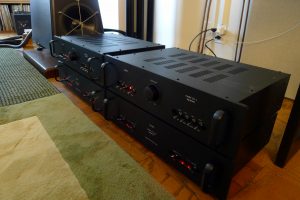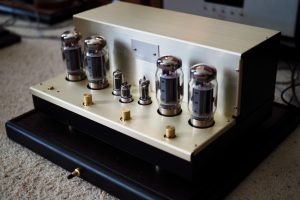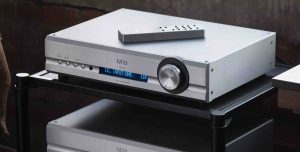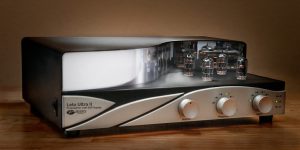Over the many years that I've been involved in high quality home audio, there's been no part of system that has given me more concern, and kept me from making a decision for what my system needs, than the preamp or linestage. Seems silly, as in theory at least, a preamp or linestage should be a fairly easy device to get right. All it really needs to do is take your various signal sources and pass them on to your power amp. It might or might not add some gain, and these days it may or may not have a phono preamp or DAC built in. Most importantly, it needs to attenuate the signal to control loudness. There are numerous choices available in the market ranging from about $49 (for a passive Schiit Audio Sys) to well over $100,000 for some of the extreme High End models (like the Boulder 3010 for $158,000). All you need to do is decide what you need and how much you're willing to spend.
In reality though, it isn't that easy. At least in my experience it seems the preamp may be one of the most significant and critical components in terms of setting the overall sound and presentation of a system. Tone, soundstage, transparency, and virtually every other aspect of the sound of your system is affected by the preamp, and whatever it does will be consistent regardless of your source. Get the preamp wrong and you might never be happy with your system.
Since I went to all separate components in 1981, I've primarily used three turntables, three CD/SACD players, four power amps. But in that same period of time I've used six different preamps. During the thirty-plus years that I used a PS Audio 4H preamp, I found that switching out its active line stage and using it as a passive preamp (the power supply then only powering the phono stage) gave me a wonderful transparent sound that satisfied fully over all those years. It was just that as it aged, it started getting noisy. Also, it did not have a remote, so I retired it several years ago.
In the twenty-four years that I have been reviewing gear, I have tried numerous active preamps, both solid-state and tube, trying to find one that was just right to my taste. The ones I really liked were all just out of my price range, so I never acquired one to keep. In 2016, as much as a stopgap measure as anything else, I started using a solid state Burson Conductor Virtuoso as an active linestage. I didn't care much for its built-in DAC, but it had two line level inputs, a remote and was clean, neutral and fairly transparent. It worked well with my two primary amplifiers too.
Also in 2016 I asked my buddy (and longtime master audio tinkerer and DIYer) Russ Stratton if he could build a little passive linestage for me. End result was a tiny (4¾ "W X 2½"D X 1½"T) passive device using a high quality TKD Audio Taper 10KOhm pot with two inputs and two outputs, one fixed and one bypassing the pot to feed a headphone amp. All told it was about $99 in parts. The shocking part was it outperformed the Burson in almost every category expect maybe ultimate dynamic punch. I loved the sound of my system using this low-cost, little device. Unfortunately, its lack of a remote for volume meant it had limited use for the way our system is used at home. A remote for volume is an essential part of the system, as my home office and the audio system share space in our home's living room. Being able to quickly adjust volume or mute the system is critical when work calls come in.
But using this DIY device made me realize I would more likely find happiness with a good remote controlled passive than any active line stage that falls into my generally low-cost price range. Listening to a few very high-end systems that used the microprocessor-controlled, passive, autoformer volume controlled (but at $14,000 very expensive) Townshend Allegri Reference Mk. II preamplifier clearly demonstrated just how good a passive preamp can get. The Townshend Allegri Reference is an amazing product for those who can swing it.
It all seemed to fall into place when in 2021 I saw the Khozmo Acoustic Passive Preamplifier mentioned somewhere. I seemed to recall some nice (and pricey) preamps on the market that used the Khozmo Attenuators in their design, but hadn't been aware that Khozmo sold complete passive preamps, too. The interesting thing about their website was that when you selected the options for your unit, you could specify both the model of attenuator you wanted and what type of resistors you wanted used. For example, for the "STEREO with Input Selector - RCA" version that I have in house:
- 48 steps SERIES (manual) $369
- 48 steps Series (remote) $569
- 64 steps LADDER Vishay (remote) $589
- 64 steps LADDER AMRT (remote) $649
- 64 steps LADDER AMRG (remote) $749
- 64 steps SHUNT AMRG+Vishay (remote) $569
- 64 steps SHUNT ZFoil+AMRT (remote) $789
Having it fully balanced and with XLR connectors adds from $70 to $230 dollars, depending on which version you order. I remember way back in the early days of high-end audio when Vishay resistors were considered an expensive upgrade, so to see them as the low cost "entry level" was both surprising and encouraging.
Another interesting option, one that I hadn't planned on asking for but was included on my review sample, was an active gain stage based on a Dual Discrete OPAMP module supplied by Danish company NewClassD which added $500 to the list price. It offers a fixed 6dB of gain and a stable input and output impedance, something very beneficial for some systems, especially those using long interconnects. The active stage can be fully bypassed with a rear mounted toggle switch.
With the active stage bypassed, the Khozmo offers a fixed input impedance of 100KOhms, though its output impedance still varies based on the volume setting. This may have a negative impact with some amplifiers, though I am lucky I guess, and both of my primary amplifiers have always mated well to passive linestages. The Burson Timekeeper Virtuoso has an input impedance of 30kOhms and the Antique Sound Labs MG-SI15DT-S input impedance is listed as 100kOhm. Seems to work fine for me.
My review sample is a Stereo with Input Selector (RCA) with 64 step LADDER AMRG (remote) attenuator and the NewClassD Active Stage. Its MSRP was $1249. Without the active gain stage it would have been $$749.
Khozmo, originally based in Poland, was in the process of relocating to Spain, so there was an understandable delay from the time we communicated about a review and when I received the device. It arrived very nicely packaged and in good working order. It was pretty quick and easy process after unboxing to get my photos and set it up in the system.
Because of the active gain stage, instead of a wall-wart to supply power for the remote control, this came with a very nice outboard filtered power supply that supplied both +5VDC for the remote and +/-15VDC for the gain stage. It came with a one meter long umbilical to connect it to the main chassis, but it did not come with a power cord. Since it used a standard EIC connector getting a power cord was easy as I simply used the one previously plugged into my old preamp, though it was nothing fancy.
I was a little concerned that there was no indicated ground post to secure a ground cable, as I did have a slight ground hum issue with my previous DIY passive, but much to my surprise and delight, after hooking the Khozmo into my system and turning everything back on, there was no noise at all, just the type of dead quiet background I constantly try for, but rarely achieve. Using Vermouth Audio Black Pearl interconnects, two of the three inputs were taken up by my iFi iPhono2 and iFi NEO iDSD, and one of the two outputs connected to my Antique Sound Labs MG-SI15DT-S amplifier. I was ready to go. To start, I chose to leave the active stage switched out, and run purely passive.
A quick run through with the remote to make sure everything was working showed easy, single-step changes in volume when tapping the Vol+ or Vol– buttons. The Mute button worked correctly and the Display button stepped through off, dim, medium and bright on the two-digit display. When set to the brightest display, it was easily readable from across the room and even off at an angle when I was at my work desk. The Standby button seemed to power the unit off while leaving the power supply on, but it might just be blanking the display. I'm not sure.
Before talking about the sound of the system with the Khozmo in place, let's go over some more details about the unit itself. Opening the case, if you weren't reminding yourself that this is a passive unit, the fact that it is largely empty inside might be a bit of a surprise. Behind the front panel there is a small PCB for the display. The display itself is a two-character display made up of thirteen LEDs each to create a very basic number display. When muted it shows a dash, otherwise it shows which of the 64 unique steps is selected.
On the left side there is a shaft from the Select knob to the rear PCB and on the right is actual Khozmo 64 step ladder attenuator. Since this has the active gain stage installed on the rear PCB there is the module for the active stage, two small discreet PCBs attached via an 8-pin connection.
The rear panel is nicely laid out with the aforementioned three inputs and two outputs, with enough distance between then to accommodate most interconnects. I had no issue tightening down the locking RCA connectors on my Vermouth cables. In between the input and output connections are the connection for the power umbilical and the toggle switch for the active gain stage.
That's pretty much it, simple, clean and looking very much like a serious effort to pass a signal unaltered through it.
Expectations, nah, not me…
Alright, let's get this out of the way first. No matter what anyone says, reviewer, reader, measurer of specifications, etc., we all have expectations, biases, and preferences. There is no way around that. The key is understanding what your own expectations, biases, and preferences are, so you recognize them and work with that understanding.
For me, based on my past history, my expectations for a passive line stage would be neutrality, transparency, clarity, and possibly a lessened sense of dynamics and soundstage size as compared to an active preamp. My biases are for simple products that don't cost too much and that exceed my expectations. I surprisingly have no bias towards technology or design factors, and don't care if a device is solid-state or tube, analog or digital. But I do have a bias against things where the price seems to have been driven up mostly to just cost more, meaning where the price is to support fancy cases or other things that could have been done simpler to keep the cost down. That is one reason I don't review very expensive gear, as I understand I would start off biased against it. I mean I can appreciate expensive gear that actually sounds better too, and believe me, the best systems I've heard have always been way out of my target price range. I just choose not to write about it.
My preferences, which are different from my biases, are to make my system sound its best within a target price range for the majority of the music I want to listen to. I specify it that way as I have seen too many times where High End audio is defined as getting "the best possible sound out of the best recordings." The difference, as I see it, are that most systems I've heard that really make "the best recordings" sound their best, tend to highlight or focus on the flaws in all other records that aren't "the best" leaving them less enjoyable to hear. This leads to audiophiles who select their music based on the quality of the recording rather than the enjoyment of the music. Since I collect and listen to music based on how much I like the music, I rarely look for specialty audiophile releases or albums that were released primarily to just sound good. My system has to be able to extract the most enjoyment possible out of whatever record or digital file I queue up. Yes, even the poorly recorded ones.
With that in mind, let's get on to the Khozmo Passive Preamp and how it worked in my system.
For the first few days I didn't do any real evaluative listening, and had the system playing all day streaming from Qobuz while I worked from home. My desk is actually way off to the side of the system (at a 30-degree angle to it), but the system fills the room with music and I tend to have it running all day while I work, just pausing it or muting it when I need to get on the phone. But then I thought, since each of the 64 steps are a unique set of resistors, any break-in happening would only be for the certain volumes I selected. The idea of having to step through each to let it break-in over time did not seem appealing, so I skipped the whole idea of break-in and just listened.
My initial reaction though, was one of surprise and somewhat unexpected. I didn't really think this device would sound very much different from the DIY passive I had been using. The only real difference would be the TKD pot versus the Khozmo attenuator, but the difference was substantial. Maybe all those super high quality resistors really do make a difference as the clarity and transparency of the system was immediately and significantly improved. I was instantly captivated.
It really didn't take long at all, a day or two maybe, to have most of my initial thoughts sorted out. And over the next couple months while I continued to listen for characteristics to write about, it only reinforced my initial impressions.
Simply put, this is the best linestage/preamp I've ever had in my system. No it isn't perfect, and we'll discuss those reasons soon, but from what I wanted a linestage to do, the Khozmo does all of it at least as good, and generally better, than any other preamp or linestage I've tried in the past.
For starters, and using a term I maybe overuse a bit, was the overall transparency through the system. It was exceptional. Some readers may remember that when I listened digitally I used the analog volume control of the iFi NEO iDSD DAC to feed directly into the power amp. The DIY unit was only used to control volume when listening to LPs. The iFi unit has a nice analog volume pot, but it is still just a pot. Setting the iFi to bypass the pot and send the full signal through the Khozmo was a big step up. Music universally had a clarity, a spaciousness, a presence born of pure transparency. It sounded more like I removed a component from system that had been cluttering up the sound rather than adding a new component. The overall transparency of my system had been at an all-time high for the past several months already, as an overhaul of my Antique Sound Labs amplifier (new tube sockets, capacitors, and a new set of Svetlana and Tung Sol tubes) had it sounding better than ever.
And yet, using the Khozmo Passive stepped that characteristic up substantially.
The Khozmo played no favorites when it came to frequency response. I suppose if I were to plot the response it would be a straight line through the audible spectrum. Nothing sounded accentuated or diminished. By comparison my Burson Conductor Virtuoso now sounded slightly bright and edgy. My highly modified and upgraded older Jolida Fusion, though recently serviced, sounded bloomy in the bass and noisy. My DIY passive sounded (sometimes at least) like it rolled off lower frequencies slightly.
I expect a passive device to produce a smaller soundstage than an active one, even if possibly with better defined images within that soundstage, but that just wasn't the case here. From all of my primary speakers and both power amps (see my equipment list by clicking on my name at the top) the soundstage was at least as large as I've been able to achieve here, and in all cases with better definition. Remember though that I'm not someone who prioritizes imaging over other characteristics, and my speakers get positioned for best tonality and bass response, not to optimize soundstage or imaging. I know I could get better depth for example, but not without a negative impact on upper bass smoothness due to room size and placement limitations.
Rather than list a bunch of LPs and digital files, just look back over my old reviews to get an idea of what I listen to. Suffice to say I listened to close to 100 LPs and several hundred digital files (16- and 24-bit PCM files and DSD) and streamed lots of CD quality and 24-bit files from Qobuz. Rock, Jazz, Classical, Folk, Americana and what my wife insists is just "weird shit" were just some of the genres played. Regardless of genre, complexity, emphasis or any other factor, the Khozmo didn't seem to care. It just sent the signal off to the amplifier with as little added or lost character as I can describe. It didn't make bad recordings sound better, but it didn't make good recordings sound worse either. Whatever came in, just went out at the volume I selected.
Wonderful!
Any quibbles? I missed having a fixed level output to send the signal to my headphone amps. But, on the other hand, I had surprisingly good results running interconnects from the second variable output to my Schiit Valhalla headphone amp. I turned the volume all the way up on the Khozmo, set the Schiit just a little louder than I would want to listen and then used the remote to adjust the Khozmo to my desired listening level. I have tried that with active preamps in the past with very disappointing results. This time, it worked like a charm and I had remote volume. So maybe not a quibble at all!
I'll be trying some new monoblock amplifiers early next year, and had thought about using longer interconnects to then use minimal (maybe one meter or less) speaker cables. Long interconnects are a no-no with a passive line stage so I won't do that. Not really much of an issue, as I only need about seven or eight foot speaker cables for a stereo amp and can get by with four foot cables with mono amps.
I'm kind of looking for something to criticize, and honestly, it is more about your system setup than any issue with the Khozmo Passive. Either your system will work well with a passive or it won't. I'm lucky in that mine always has been very agreeable to passive linestages.
Regarding the optional active gain stage, I'll bet inexperienced listeners would have a hard time detecting if it was switched in our out, as there was no frequency response differences to speak of, just a difference of 6dB in output. However the final sound was not the same. Mostly there was a drop in transparency, as there was clearly now something in between me and the music. It wasn't offensive or irritating or bad but it was noticeable. In fact it sounded like a very good moderately priced active preamp. The sound fit neatly into a somewhat smaller sound field, and the system didn't disappear as it did without the active stage. But, having said that, I'd be hard pressed right now to think of a similarly priced active linestage that would sound better than this, especially since they would likely have a simple volume pot (like an ALPS Blue Velvet). The Schiit Audio preamps that use their own design relay attenuator would be a nice comparison to try. Maybe I'll check that out in 2024.
But unless you are running long interconnects, have a power amp with a low input impedance, or use sources with insufficient output level, there's no need for the active stage. And not only would that simplify the system it would drop the price substantially too. In my case with this unit, it would be $749 without the active stage. For this level of sound and build quality that is beyond "bargain" territory and practically a steal.

To sum up, though this may be viewed by some as a good low cost, budget or entry level product based on its price, in reality it is a real, honest-to-goodness High End linestage that could be at home in a system many times the cost of my own humble setup. It gets my highest recommendation.
Khozmo Acoustic Passive Linestage
Retail: $1249 as reviewed, $749 without the Active Gain stage
Images by Steve Lefkowicz




